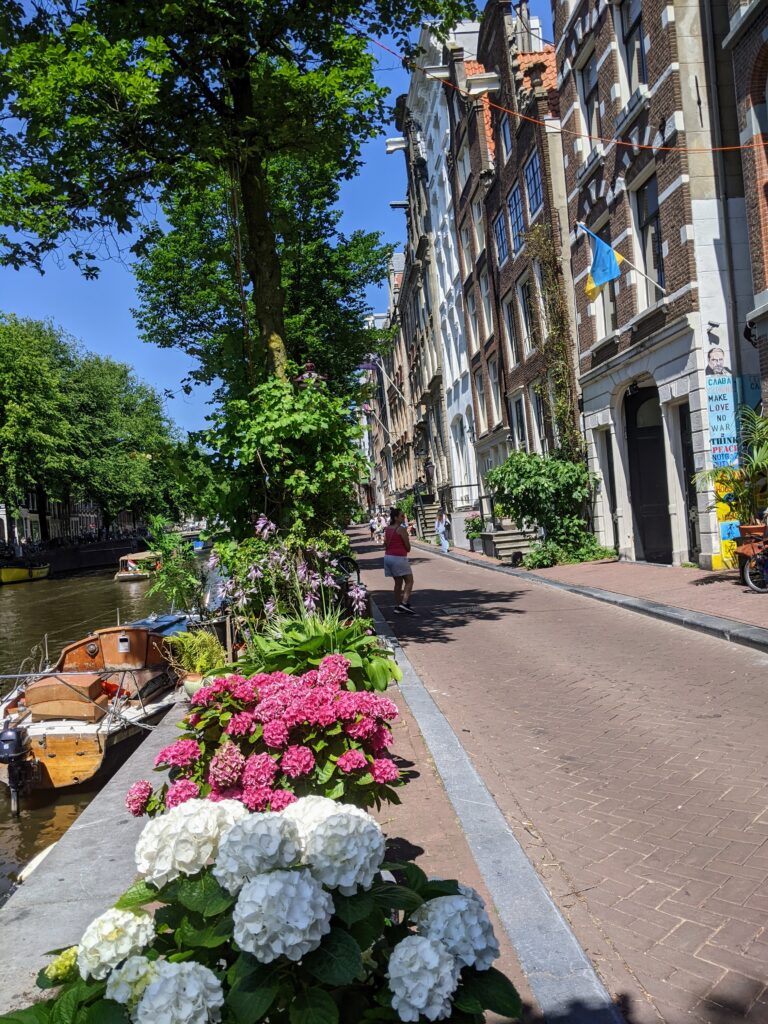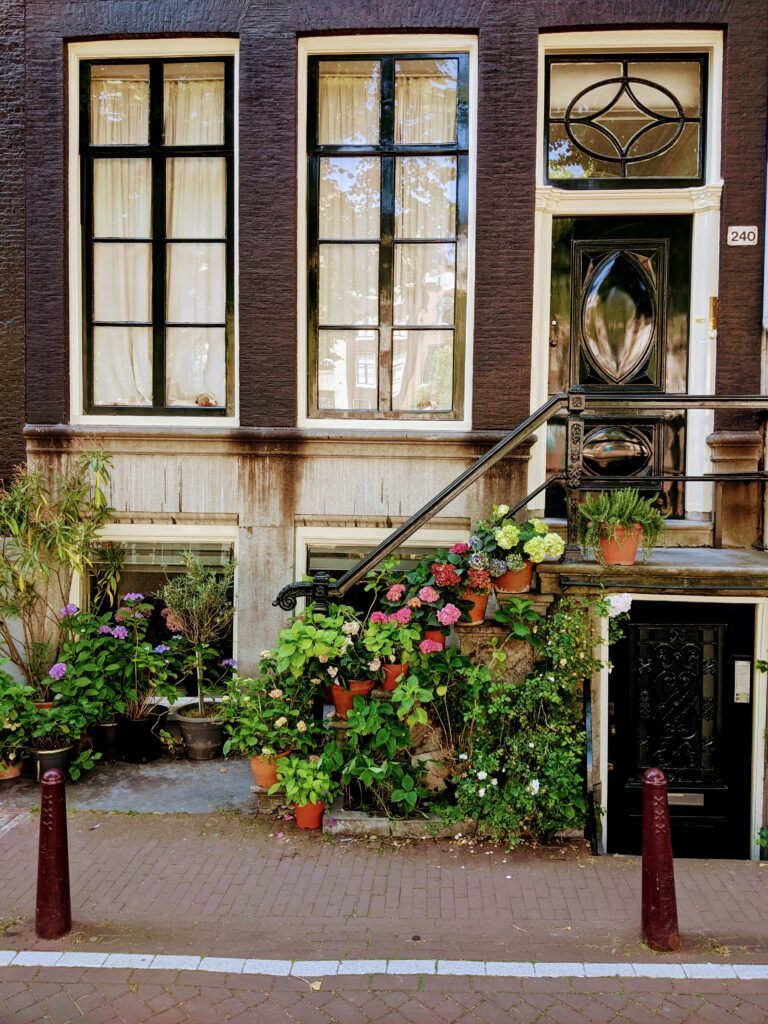Amsterdam…
Walking through Amsterdam taught me that no, its not enough to visit Delft and Leiden and the Hague if you go to the Netherlands. There is no substitute for the wide canals and tall seventieth century town houses of Amsterdam. You can walk from the train station of Amsterdam in many directions and keep walking through the ‘historic core’ of the city for street after street, after canal and canal, after block of beautiful brick town house facades, and onwards. And you’re still in a ‘historic core’. It is huge! Other historic cities in the Netherlands have a surprisingly large size, but Amsterdam puts them all into perspective as little brothers and sisters. This city is unique. Its like a Protestant Venice. You walk past a domed church, looking over canals lined with tall green trees, each side lined with beautiful town houses. And the distance between the two sides of the canal, combined with the height of the six story town houses, gives you a feeling of spaciousness that some other historic cities don’t have. Of course Venice has it with its lagoon and with its Grand Canal. But Amsterdam has it as well in its largest concentric rings of inner canals. I see why generations of tourists have made their way to Amsterdam now. All the money made by the trading Dutch of four centuries ago had to go somewhere. Much of it went into this city, in a manner that is most pleasing to the modern flaneur.
I visited an eighteenth century sailing ship that was a reconstruction of a real East Indiaman made in the 1980s and moored outside the National Maritime Museum. This was different to other museum artefacts or reconstructions of its kind though, as here you can actually climb into a sailor’s hammock, and lay back rocking and considering the cannons lining the ships walls. Here you can walk amongst cargo down in the vast and cavernous wooden hold of the ship. Here you can peek through the door of the surgeon’s cabin and see his collection of plants and his surgical instruments beside his bed. Here you can sit yourself down in the chair of the Master in the Master’s dining room. The novels of Patrick O’Brian have been important to me over the years for their vivid portrayal of the Napoleonic wars and riding the seas of the globe around 1800 amongst seafarers in the British navy, novels full of humour, literary references, optimism and bravado. O’Brian has such deft characterisations of people and places, admirals, storms and harbours, from Reunion Island to Mahon. So to wander freely around this great leviathan of an eighteenth century sailing ship, the Amsterdam, complete with iron cannons, tall oak masts and fluttering flags, quietly moored besides the old Dutch arsenal, was special for me. It helped me understand the novels more, to understand that long lost world of brothers in arms, making creaking oak castles forever ship shape as they made their way through the big blue world.





The other thing every self respecting tourist does in Amsterdam is go to the Rijksmuseum, the national museum of the Netherlands dedicated to Dutch art. The previous night I had been at a wonderful performance of Carmina Burana, the choral work by Carl Orff that is based on thousand year old medieval Latin poems about love, lust, and the wheel of fortune. This had made me a bit pensive about Fortuna. How the wheel of fortune lifts us sometimes and dashes us low at other times.
Regnabo, Regno, Regnavi, Sum sine regno.
(I shall reign, I reign, I have reigned, I am without a realm).
O Fortuna!
Then today at the Rijksmuseum I saw the following painting.

It made me think of the lyrics from the music last night, in Latin, but translated into English they would read:
On Fortune’s throne
I used to sit raised up,
crowned with
the many-colored flowers of prosperity;
though I may have flourished
happy and blessed,
now I fall from the peak
deprived of glory.
The wheel of Fortune turns:
I go down, demeaned;
another is raised up;
far too high up
sits the king at the summit –
let him fear ruin!
My favourite work at the museum is ‘Jeremiah Lamenting the Destruction of Jerusalem’ by Rembrandt van Rijn, 1630.

